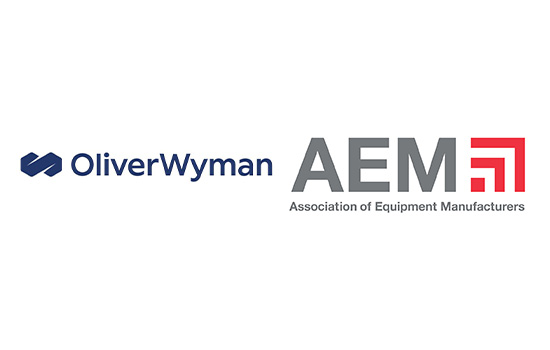By Gregg Wartgow, Special to AEM —
Corporate strategy around “big data” has evolved threefold in recent years. We’ve gone from Data 1.0, where companies simply set out to collect as much as possible, to Data 2.0 where companies started to seek insights through pattern recognition. Now, in the era of Data 3.0, the best data-driven companies are seeking the kinds of insights that will help them make predictions.
The challenge is that “big data” in and of itself will rarely enable the kind of forward-looking decision-making that helps companies produce big results like cultivating new customers, growing market share, increasing profits, etc. In fact, overly relying on quantitative data can actually get in the way.
“Too much data can end up blinding you,” said Tricia Wang, co-founder of Sudden Compass, a consulting firm working with Fortune 500 companies and tech startups to generate insights from big data. Wang presented at AEM’s 2023 Annual Conference in Fort Lauderdale, Florida.
When it comes to data, it’s more about quality than quantity. But it’s also about the manner in which that data is leveraged to make important decisions. “The thing is, investing in data is easy, but using it is hard,” Wang said. “You have to be careful not to lead your business down the wrong path.”
Big Data Lacks the Context That Sharpens Insight
The downside of overly relying on quantitative data itself is that computing intelligence struggles with context. A good example is image-recognition software. If an image is distorted, or perhaps the object in the image is positioned in an abnormal way, the machine can end up making some poor assumptions.
“Big data on its own can paint a dangerously incomplete picture,” Wang said. “That means the role of people becomes even more important. In a world where things are becoming increasingly quantified, you need to have human beings who understand context.”
Wang is an ethnographer, which is essentially the science of studying people. She shared a personal story about doing some consulting work for Nokia back when smartphones were first coming to market. The quantitative data was telling Nokia executives that their phone sales were strong, priced correctly, and on an unimpeded upward trajectory. But after spending time in several lower-income communities in China, Wang saw something different. People were buying Shanzhai (copycat) iPhones. Yes, they were saving money by purchasing a copycat. But they were also spending far more than they would have paid for a Nokia. More importantly, they were enamored with the functionality of this new type of phone. Through this observational data, Wang saw that smartphones would ultimately take over the market. But the Nokia executives resisted Wang’s analysis because it wasn’t based on big data.
“What I had witnessed was something called quantification bias, which is the unconscious belief of valuing the measurable over the immeasurable,” Wang said. But in reality, that immeasurable data is tremendously valuable, just as the Nokia executives soon discovered.
“Big data on its own can paint a dangerously incomplete picture. That means the role of people becomes even more important. In a world where things are becoming increasingly quantified, you need to have human beings who understand context.” -- Tricia Wang
3 Steps to Insight-Driven Decision-making
If companies would like to put themselves in a position to evade quantification bias and the poor assumptions that can result from it, Wang outlined three key steps to take.
Companies must begin valuing thick data. Thick data is that immeasurable qualitative data. It’s often derived from experience and observation, and it helps decision-makers understand human behavior and emotion. “Thick data tells you what you don’t already know, leading to insights that challenge your assumptions and business as usual,” Wang said.
So where does thick data come from?
“You still have to be on the ground and understand the work being done,” Wang said. “I can’t imagine an industry where that message is more important than for AEM. The work the agriculture and construction industries do is very physical. You must value the knowledge and abilities of your workers and customers, and then find a way to marry those thick-data insights with the quantitative data.”
Integrate big data and thick data. “When you marry big data and thick data, you get the best of both worlds,” Wang said. You get machine and human intelligence, content and context, and depth and scale. “Most importantly, you can gain an understanding of why something is actually happening,” Wang added.
Thick data is what brings big data to life. Wang said a good habit to develop is to always take a step back and ask “why” when studying quantitative data. Where do you need to go to find that thick data that helps answer “why”? Do you personally possess that thick data? Does someone else in your organization? Do your dealers or customers? If so, are you in regular contact with them so you can maintain a steady stream of thick data to complement the troves of big data you’re also gathering?
Build a thick-data culture. Wang said there are 7 C’s to getting value out of data. Many companies focus on the three easier ones, which are collecting, cleansing and classifying data. But the other four, while more difficult to implement, are also the most important.
How do you as a company get your people to collaborate around the data? How do you make sure the data is actually telling you something about the customer? And how do you create a culture of cross-functional communication around the data?
Wang says the time is now for companies to commit to building a culture that prioritizes human interaction, both internally and externally. When a company has established a thick data-driven culture, the following tend to follow suit:
- Employees at all levels are expected to interact with the customer.
- Teams are expected to collaborate cross-functionally across the organization.
- Employees at all levels routinely ask for the thick-data stories behind the numbers.
Once a company has established a thick-data culture, falling into the dangerous trap of quantification bias is far less likely. As Wang pointed out, some of the most valuable data is data that can’t show up in a table or graph. When that thick data is married to the quantitative big data, companies can move toward the kind of forward-looking decision-making they’re seeking from data in the first place. And that is when data truly becomes an asset.
Save the Date: 2024 AEM Annual Conference
Join AEM Nov. 13-15, 2024, at the Renaissance Esmeralda Resort & Spa in Indian Wells, California. For more information, visit aem.org./annual.
For more news and information regarding issues important to equipment manufacturers, subscribe to the AEM Industry Advisor.





